Property Geek
We provide the actual and accurate information with unbiased user driven reviews to our viewers, to help them see the best and find the best!
View posts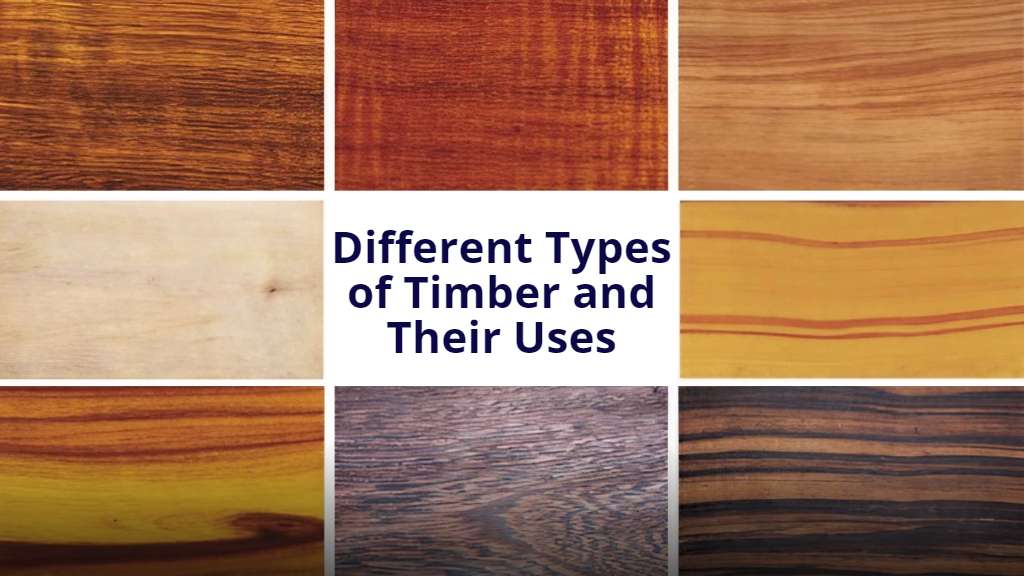
Timber, with its wide variety of species and characteristics, is a versatile material used in countless applications. From construction to furniture making, different types of timber offer unique qualities that make them suitable for specific uses. Whether it’s the strength of oak, the durability of cedar, the elegance of mahogany, or the versatility of maple, each timber type brings its own charm and functionality to various projects.
In this article, we will explore different types of timber and their uses, highlighting their distinct properties and applications. Join us as we delve into different types of timber and discover how different species contribute to the creation of structures, furniture, and decorative elements that enhance our living spaces.

Pine is commonly used in general construction due to its availability and affordability. It is used for framing houses, buildings, and other structures. It is one of the best types of timber and is often utilized for creating the structural framework of buildings, including wall studs, floor joists, and roof trusses.
It is a common choice for interior and exterior trim work. It can be used for baseboards, crown molding, window and door casings, and wainscoting. Pine timber is frequently employed in the construction of furniture. It can be used to create various types of furniture, including tables, chairs, cabinets, and shelves.
Additionally, pine wood is often used for paneling, flooring, and making doors. It can be stained or painted to achieve different finishes, making it versatile for different design styles. Pine timber is renowned for its characteristic grain pattern, light color, and ability to take finishes well.

It is highly regarded for its strength, durability, and attractive grain patterns. Oak is one of the best types of timber and is the first choice for furniture making, particularly for pieces that require strength and longevity. It is commonly used for dining tables, chairs, bed frames, dressers, and cabinets. The natural beauty of oak grain can also add a touch of elegance to furniture designs.
Oak is frequently utilized for cabinetry in kitchens, bathrooms, and other areas of the home. It provides a sturdy and visually appealing option for constructing kitchen cabinets, storage units, and built-in shelves. Oak flooring is highly sought after all thanks to its durability and classic appearance. It is used for both residential and commercial applications, offering a timeless and versatile flooring option.
Oak comes in different varieties, including Red Oak and White Oak, each with its unique properties. Red Oak tends to have a reddish hue and a prominent grain pattern, while White Oak has a slightly lighter color and a more closed-grain structure. Both types of oak can be used in various applications, but White Oak is generally considered more water-resistant and is often preferred for outdoor furniture and marine applications.

Cedar timber is known for its natural properties that make it resistant to decay and insect infestation. It is used in exterior siding because of its durability and resistance to rot. Cedar siding provides both protection and an attractive appearance for homes and buildings.
Cedar decking is well-known for its natural beauty and resistance to moisture and decay. It is often used to create outdoor decks, patios, and other outdoor living spaces. Cedar is also a preferred material for fencing owing to its resistance to rot, insects, and weathering. Cedar fences offer privacy, security, and longevity in outdoor environments.
Cedar is commonly used for crafting outdoor furniture such as benches, tables, and chairs. Its natural resistance to decay makes it a suitable choice for enduring outdoor conditions. Cedar shingles and shakes are popular for roofing due to their durability, insulation properties, and attractive appearance. They provide a classic and natural aesthetic for roofs.
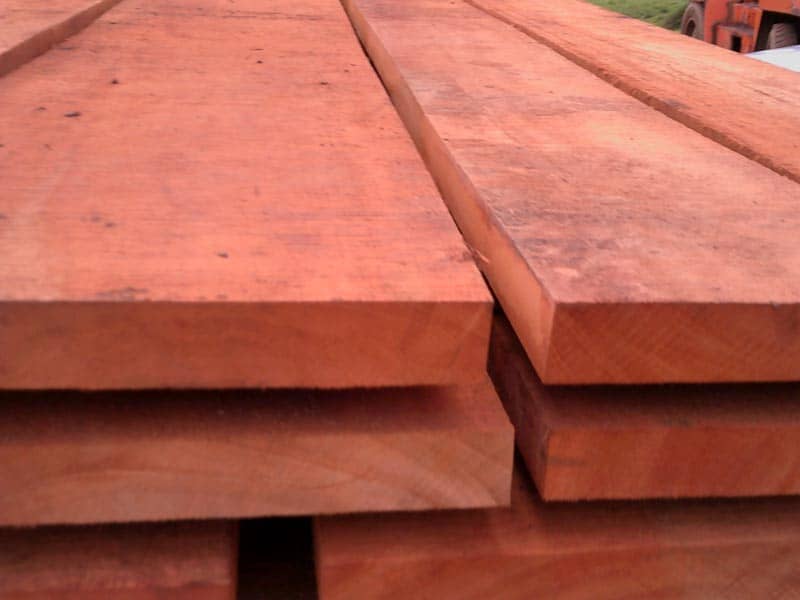
Mahogany timber is highly prized for its distinct characteristics, including its rich color, attractive grain pattern, and durability. It is a preferred choice for crafting high-quality and luxurious furniture pieces. It is commonly used for dining tables, chairs, cabinets, desks, chests of drawers, and other fine furniture items. The deep reddish-brown color and straight grain of mahogany lend an elegant and timeless look to furniture designs.
Mahogany timber is often utilized in the construction of high-end cabinetry, such as kitchen cabinets, bathroom vanities, and custom storage units. Its beauty and durability make it a sought-after option for adding a touch of sophistication to interior spaces.
It is also highly regarded in the realm of musical instrument making. It is used in the construction of acoustic guitars, ukuleles, pianos, and other stringed musical instruments. The tonal properties of mahogany play a part in the warm and resonant sound produced by these instruments.
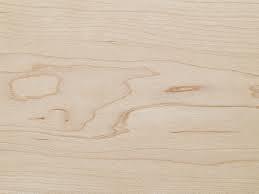
Maple timber is popular for its light color, density, and appealing grain patterns. It is widely used in furniture making as a result of its durability and attractive appearance. It is often used to create dining tables, chairs, dressers, cabinets, and other types of furniture. The light color and fine grain of maple can contribute to a clean and contemporary aesthetic, putting it atop the list of best types of timber.
Maple flooring is great for residential and commercial spaces. Its density and hardness make it highly durable and resistant to wear and tear. Maple flooring can range from light blonde to a slightly reddish hue, adding warmth and brightness to interior spaces.
It is frequently used in the construction of kitchen cabinets, bathroom vanities, and other cabinetry applications. Its smooth and consistent grain pattern can provide a sleek and modern look to the cabinetry design.

Its deep brown color, often with a purplish hue, and beautiful grain patterns make it ideal for crafting dining tables, chairs, cabinets, desks, beds, and other fine furniture pieces. Walnut lends an air of elegance and sophistication to furniture designs.
Walnut timber is often employed in the construction of high-end cabinetry. It is commonly used for kitchen cabinets, bathroom vanities, custom storage units, and built-in shelving. The rich color and distinct grain patterns of walnut create a visually striking and upscale appearance.
It is also highly sought after for its warm and inviting look. The dark color of walnut adds a touch of luxury to interior spaces, making it a popular choice for residential and commercial flooring applications.
Other than that, it is used in paneling or wall cladding can create a statement feature in interior design. The rich color and unique grain patterns of walnut add visual interest and warmth to walls and ceilings.

Birch is often used in the construction of furniture, particularly for pieces that require a light and clean appearance. It can be found in the production of chairs, tables, dressers, cabinets, and other types of furniture. The smooth grain of birch lends itself well to contemporary and modern furniture designs.
This timber is commonly utilized for cabinetry, including kitchen cabinets, bathroom vanities, and storage units. Its light color and smooth texture provide a neutral and clean canvas for various interior styles. Birch is a popular choice for interior trim, such as baseboards, crown moldings, and window casings. Its light color allows it to blend well with different wall colors and provides a cohesive look to interior spaces.

Teak is one of the best types of timber renowned for its use in outdoor furniture thanks to its remarkable durability and resistance to the elements. It is commonly used to create garden benches, patio sets, dining tables, chairs, loungers, and other outdoor furniture pieces. Teak furniture can withstand exposure to sunlight, rain, and temperature variations without deteriorating.
Teak has been a popular choice for boat decks and other marine applications for centuries. Its natural oils and dense grain make it highly resistant to moisture, warping, and decay. Teak decking provides a non-slip surface and an elegant appearance on boats, yachts, and other watercraft.
Other than that, Teak veneers are utilized as decorative overlays for furniture, cabinetry, and interior paneling. The rich golden-brown color and straight grain of teak make it a popular choice for adding a touch of luxury to various surfaces.
Teak timber’s exceptional durability, resistance to rot, and elegant appearance make it appealing for outdoor furniture, boat decks, marine applications, flooring, and decorative purposes. Its ability to withstand harsh weather conditions and retain its beauty over time has made it a premium choice for various applications.
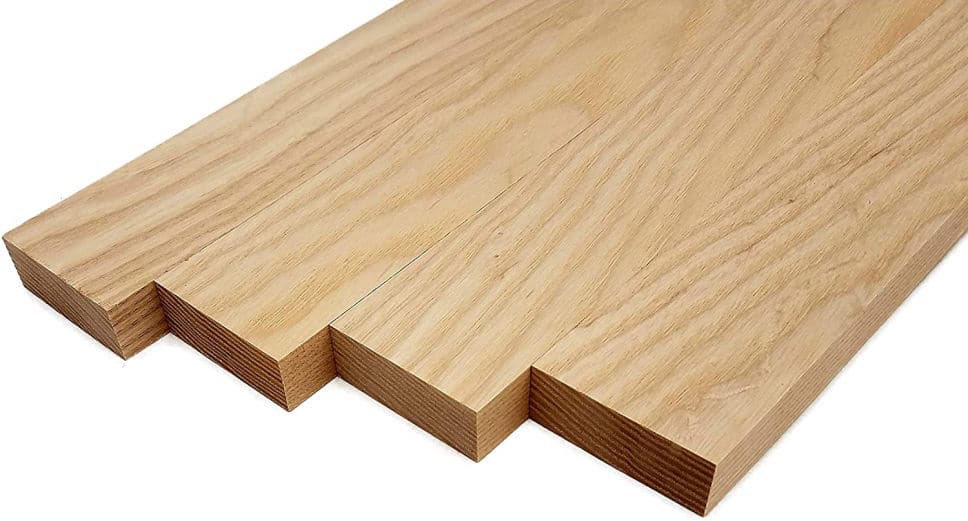
Ash is widely used in the production of furniture because to its strength and durability. It is commonly used for crafting chairs, tables, cabinets, and other furniture pieces. Ash furniture can range from contemporary designs to more traditional styles, depending on the finish and treatment applied to the wood.
Ash flooring is also a popular choice for both residential and commercial applications. Its light color and distinct grain patterns can add a touch of elegance to interior spaces. Ash floors are known for their durability and ability to withstand heavy foot traffic.
Moreover, Ash timber is commonly used in the construction of sports equipment, particularly in baseball and softball bats. Its strength, flexibility, and light weight make it a preferred choice for these applications. Ash is also used for components in tennis rackets, hockey sticks, and other sports equipment.
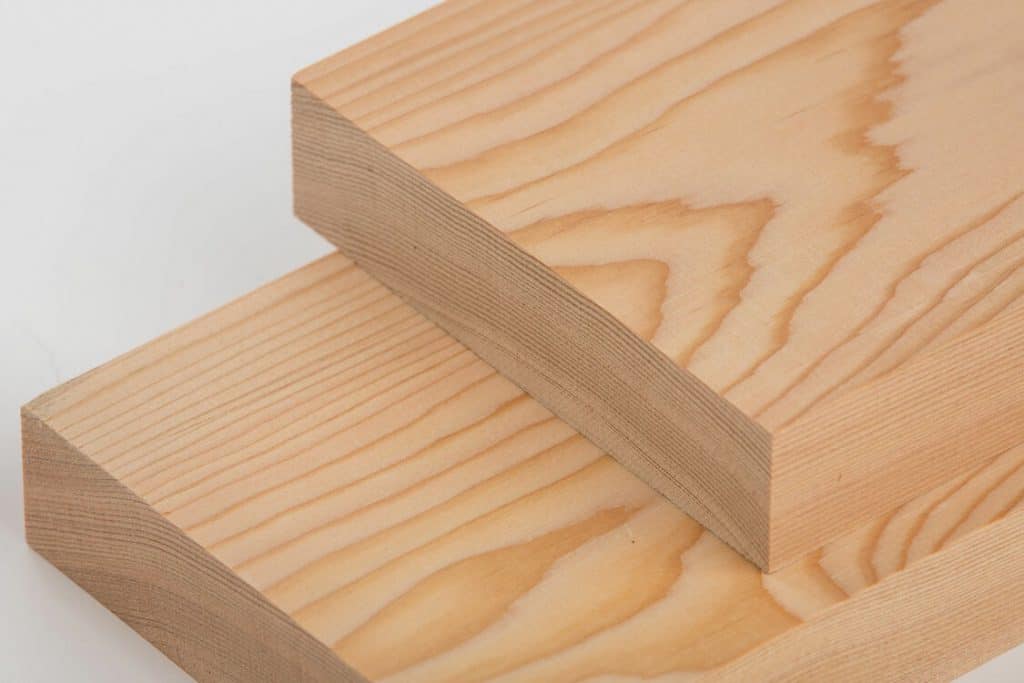
Fir is widely used for construction framing, including walls, roofs, and floors. Its strength and dimensional stability make it suitable for supporting structural loads. Fir framing lumber is famous for its straight grain and ability to resist warping.
Fir flooring is a common choice for residential and commercial applications. Its light color and fine grain create a clean and natural look. Fir flooring is popular owing to its durability and ability to withstand heavy foot traffic.
Certain species of fir, such as Douglas fir, are used for exterior siding. Fir siding offers a natural and rustic look to buildings and can withstand exposure to the elements with proper maintenance.
Fir timber’s strength, dimensional stability, and versatility make it well-suited for a range of construction. Its use in framing, flooring, plywood, doors, windows, and general millwork has made it a popular choice in the building industry.
Timber is a versatile material used in construction, furniture making, and various design applications. Whether it’s creating sturdy structures, elegant furniture pieces, or durable flooring, timber remains a timeless choice. By embracing the beauty and functionality of timber in a responsible manner, we can continue to enjoy its versatility while preserving our forests for future generations.
The term “timber” is derived from Old English and has been used for centuries to refer to wood that has been prepared for construction or other purposes. It likely originated from the practice of timber framing, which involved using large wooden beams for structural support. Over time, “timber” has become a broader term encompassing various wood products used in construction and woodworking.
Timber is important for construction as it provides strength and stability to buildings and infrastructure projects. It is a renewable resource, making it an environmentally sustainable choice. Timber also offers aesthetic appeal, versatility in design, and contributes to local economies and employment opportunities in the forestry and manufacturing sectors.